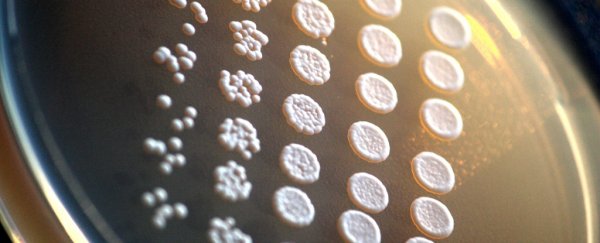Biologists have served up the answer to the ultimate question of life, the Universe, and everything.
That answer, as you may know, is 42. And the question, in this case, is "how many million protein molecules are there in a single cell?"
Given that cells are the basic structural units of all living organisms we know of, the team at the University of Toronto in Canada really couldn't have arrived at a more fitting number - but they didn't set out to verify the fancies of Douglas Adams.
Proteins are the molecules doing the majority of heavy lifting within our cells, and their activity is what determines how well our cells function and communicate with each other.
On top of that, a cell's proteome - the complete collection of proteins within the cell - is highly dynamic, constantly being affected by environmental changes and stresses.
Given the proteins' fundamental importance, it's no surprise that biologists need to know how many proteins there are, if they're going to have a complete understanding of what really goes on inside a cell.
But the difficulty in pinning down a good number for protein abundance comes down to the different methods and arbitrary measurement units scientists have used over the years.
"Despite the comprehensive nature of existing protein abundance studies, it remains difficult to ascertain whether a given protein abundance from any individual study, independent of other abundance studies, is reliable and accurate," the team writes in their paper.
The study looked at data from 21 separate analyses measuring the amount of proteins in Saccharomyces cerevisiae, a single-cell yeast species that serves as one of the classic model organisms in cellular biology.
With so many datasets, the researchers jumped at the opportunity to put together a comprehensive analysis - although they had to convert all the data to one measurement first.
"It was hard to conceptualise how many proteins there are in the cell because the data was reported on drastically different scales," says one of the team, graduate student Brandon Ho.
The team settled on the amount of molecules per cell as being the "most intuitive expression of protein abundance", and got to work normalising the data and matching up those vastly different scales.
S. cerevisiae is currently estimated to have a proteome of 5,858 proteins, and the team was able to determine that in an average yeast cell the molecules of these proteins would amount to 4.2 x 10^7 - or 42 million.
The abundance of these proteins is not evenly distributed, however. Most of the types of proteins in the yeast cell will have somewhere between 1,000 and 10,000 molecules, a few will only be represented by a handful, and yet some others could measure as many as half a million.
Not only do researchers now have a reliable number for protein abundance in yeast, but the methods they've devised in this study could even help us do similar studies on human cell proteomes in the future.
Given that a whole range of human diseases, including Alzheimer's and ALS, involve abnormal functioning of our cells' proteins, it's great to make headway in finding out more about these crucial little molecules.
The study has been published in Cell Systems.
